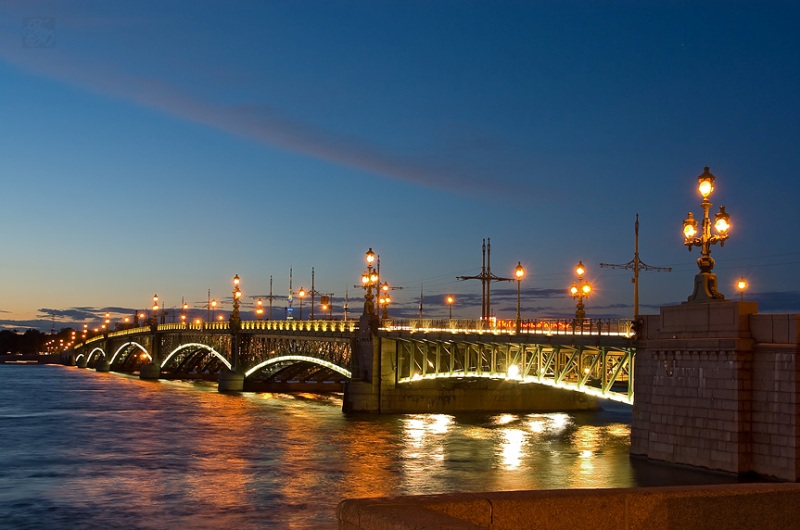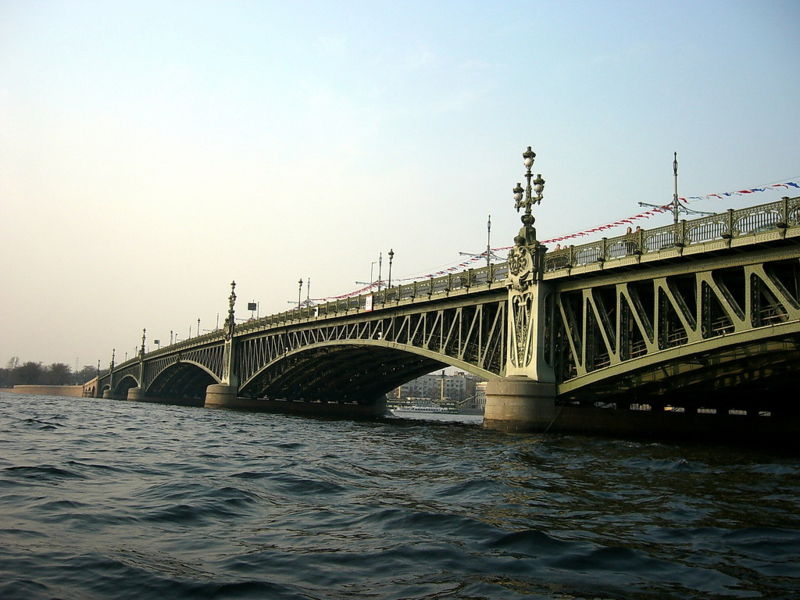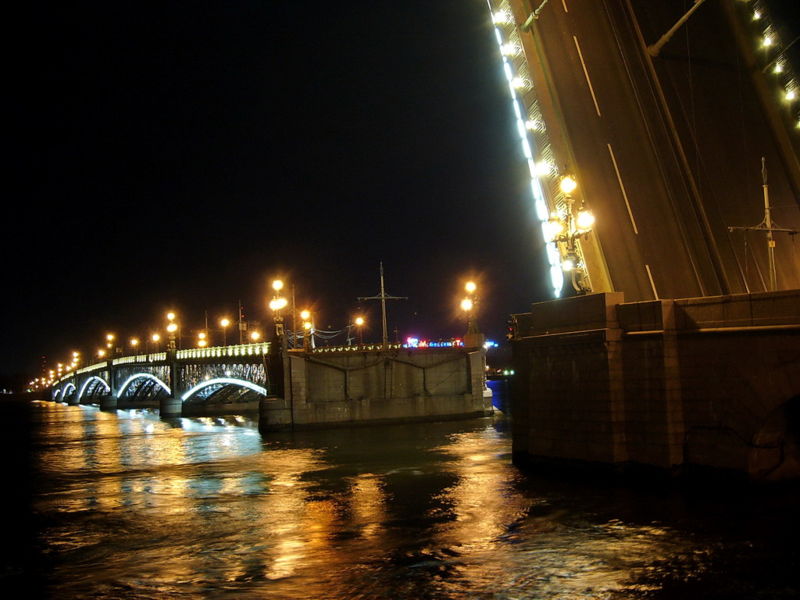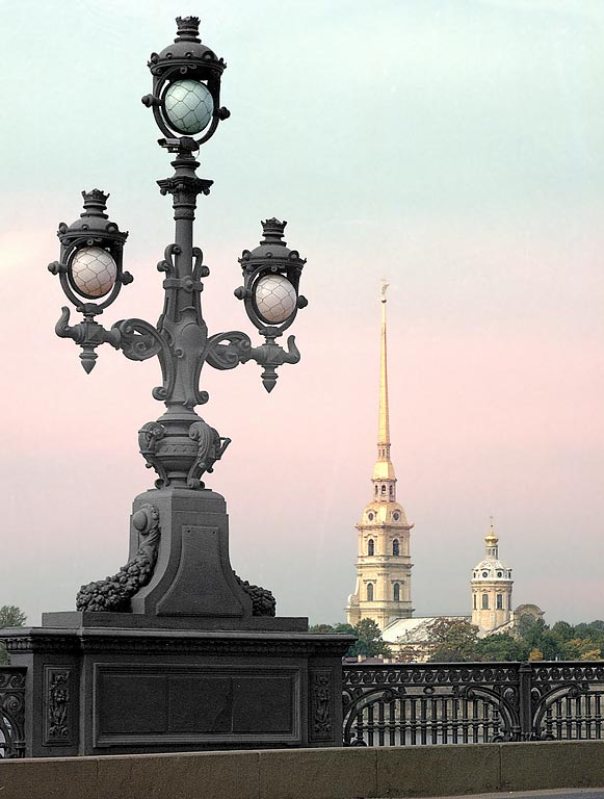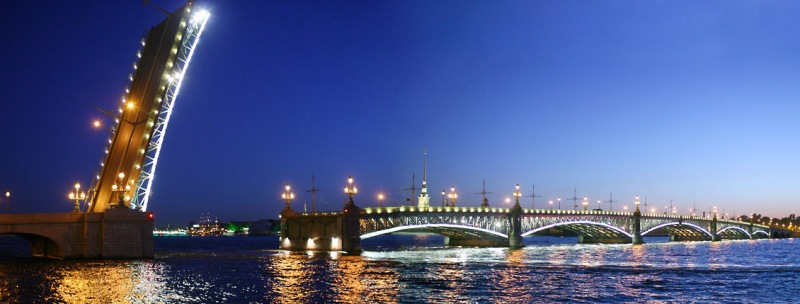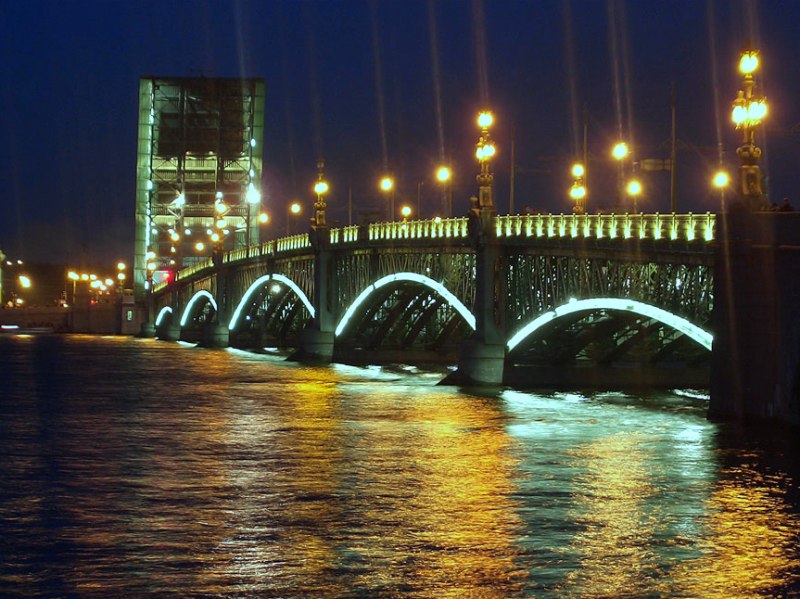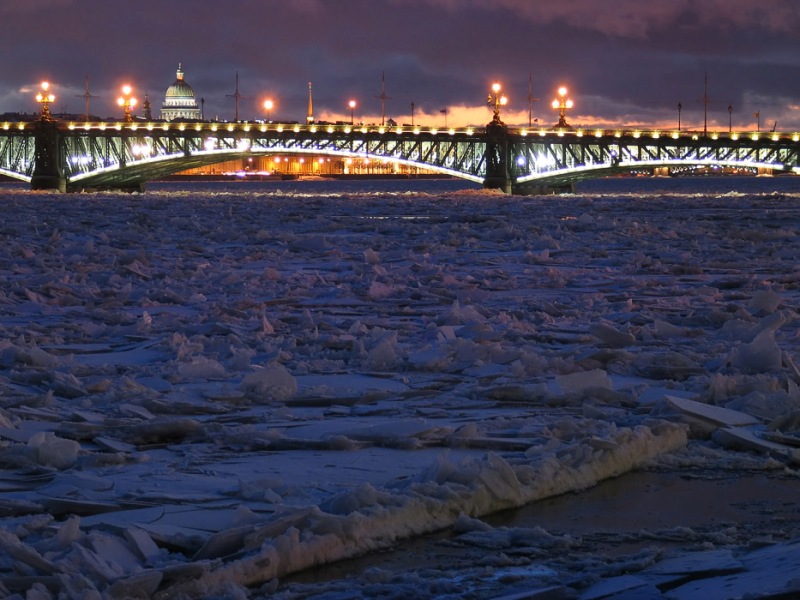| |||||||
Europe
North AmericaSouth AmericaAsiaAustralia and OceaniaAfrica |
Смотрите также: Trinity Bridge Trinity Bridge (Russian: Троицкий мост) is the beam bridge across Neva in Saint Petersburg, Russia. It connects Kamennoostrovsky Prospect with Suvorovskaya Square.
It was built as the third permanent bridge across the Neva between 1897 and 1903 by the French firm "Batignolles". It is 582 meters long and 23.6 meters wide. Former names of the bridge are Equality Bridge (Russian: мост Равенства, 1918-1934), and Kirovsky Bridge (Russian: Кировский мост, 1934-1999).
Trinity Bridge Carries 4 lanes of roadway, tram lines Crosses Neva River Locale Saint Petersburg Design Segmental bridge, bascule bridge Longest span 43 meters Total length 582 meters Width 24 meters Opening date 1903, first half
History and construction In 1803 the Voskresensky ponton bridge, which existed since 1786 near Voskresensky Prospected (now Chernyshevsky Prospect), was moved to Summer Garden. In 1825, after the creation of Suvorovskaya Square, the ponton Suvorovsky Bridge connected it with Troitskaya Square. Stone bank piers, openwork cast iron gratings and lanterns by A. P. Zuyev, V. P. Lebedev, P. P. Bazen were set. In the design of lanterns motives of warrior's armor were used (afterwards lamps were revived in entrances of the bridge, cast iron gratings - on Kronverkskaya Embankment).
In 1892 the contest for constructing a permanent Troitsky Bridge was started. There were 16 projects from Russian and European engineers, including one of the French engineer Gustave Eiffel, the creator of the famous tower in Paris. The winner was the out-of-competition project of V. Shabrol and R. Patulyar from the French "Building Company Batgnolles". Their project was essentially supplemented by Russian engineers G. G. Krivoshein (the author of modern stone viaduct), N. A. Belelyubsky, L. F. Nikolai and others. A special commission from the Academy of Arts, including Leon Benois, A. N. Pomerantsev, G. A. Gedike and G. I. Kotov participated in the project, too. The engineer I. A. Landau took part in the construction of the bridge. The construction began on 12 August 1897. Félix Faure, the president of France was present at the ceremony. It was completed in 1903, on time for the 200-year anniversary of Saint Petersburg.
Trinity Bridge drawn at night Originally the bridge had nine spans: five permanent metallic riveted spans, with original for that time console-arch-beam system and gradual increasing span length from banks to the middle of the river. Three-arch granite viaduct comes from the right bank to them, and two-winged bascule span was located directly near the left bank, at that the wings were drawn in horizontal plane. The construction of spans, in which the girder of uncut type excesses more than one span, let substantially relive the central part of the arches, decrease river supports, put the span structures into shape of gentle arches.
The bridge is decorated with cast iron gratings of artistic casting, granite pylons with lanterns and metallic three-colour lanterns in Modern style. In 1955 artistic obelisks at the entrance to bridge from Suvorovskaya Square were partially reconstructed. In 1965-1967, by the project of G. M. Stepanov and K. P. Klochkov engineers and Yu. I. Sinitsa, architect, bascule span was reconstructed. It became one-winged and lifting. Its length was led to 43 meters of length and the appearance was approximated to other metal spans. Granite arch slope was set at the left bank. During the reconstruction water slopes were enlarged and granite benches were set along left bank abutment. Comments: 0 |
|
|||||







































